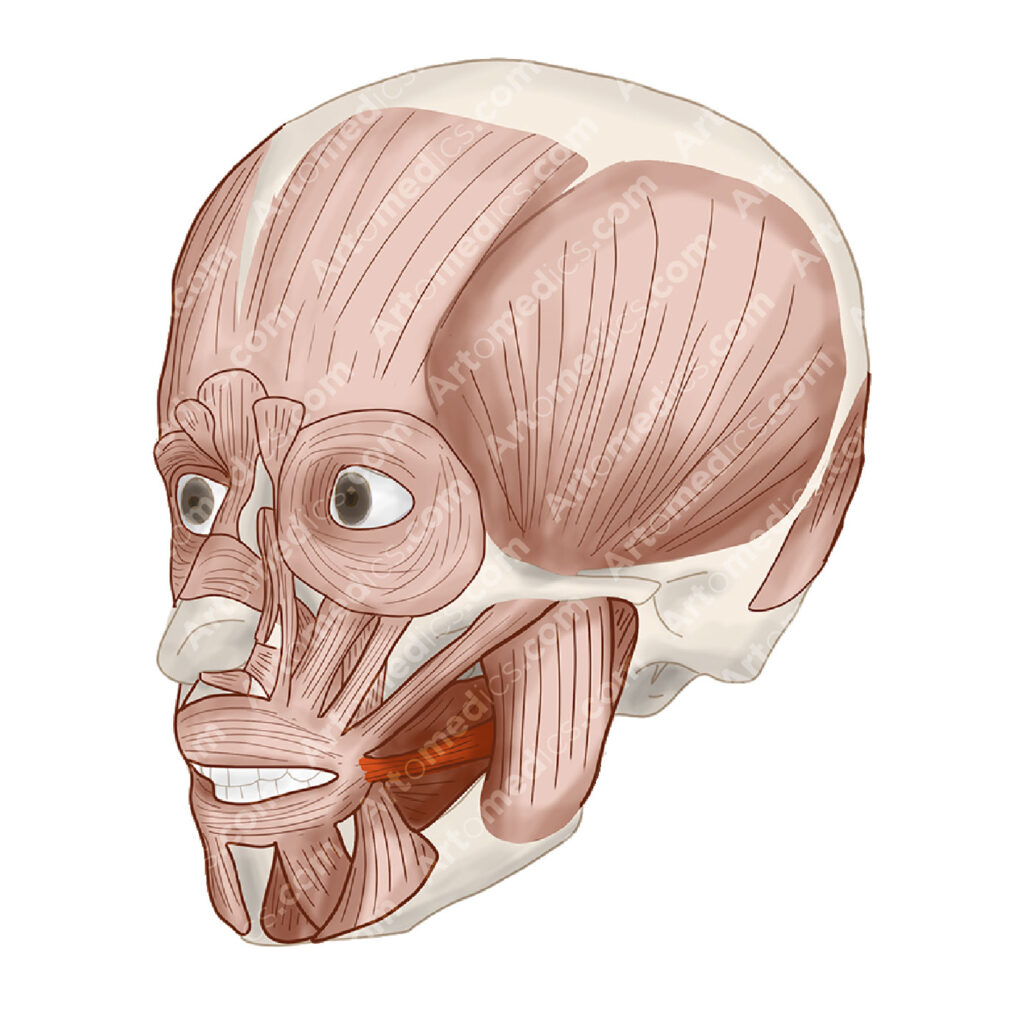Risorius muscle: the smiling muscle
By pulling the mouth from the sides when you smile, the Risorius muscle gains it’s nickname of the smiling muscle.

The Risorius muscle seems to be unique, being present in Homininae species only. That is, African great apes and us Humans, lucky us for being able to smile huh?

What does the Risorius Muscle do?
It pulls back the angle of the Orbicularis Oris, creating a smile, albeit incomplete without the wrinkling of the eyes or raising the lips, which requires the involvement of zygomaticus muscle.
Facelifts and Risorius origins
It’s generally agreed that the origin of attachment of the risorius muscle is the parotid fascia but a study in 2014 aimed to clarify whether the fascia over the masseter was involved. This involved the study of 46 specimens to find the exact origin of this muscle and it found that most of the time (58.7%) it was in the Superficial MusculoAponeurotic System (SMAS).
The muscle attachments of this muscle is an important consideration when performing face lift surgeries and injecting Botox, whether it’s for looking younger or fixing masseteric hypertrophy.
Humans are one of the few animals that have this muscle.
Risorius Muscle Fact sheet
Innervation
Buccal branch of the Facial nerve (VII)
Blood Supply
Superior labial artery (from the facial artery).
Muscle Attachments
Origin
Insertion
Modiolus
Reference
Standring, Susan. Gray’s Anatomy: The Anatomical Basis of Clinical Practice. , 2016. Print.

Leave a Reply